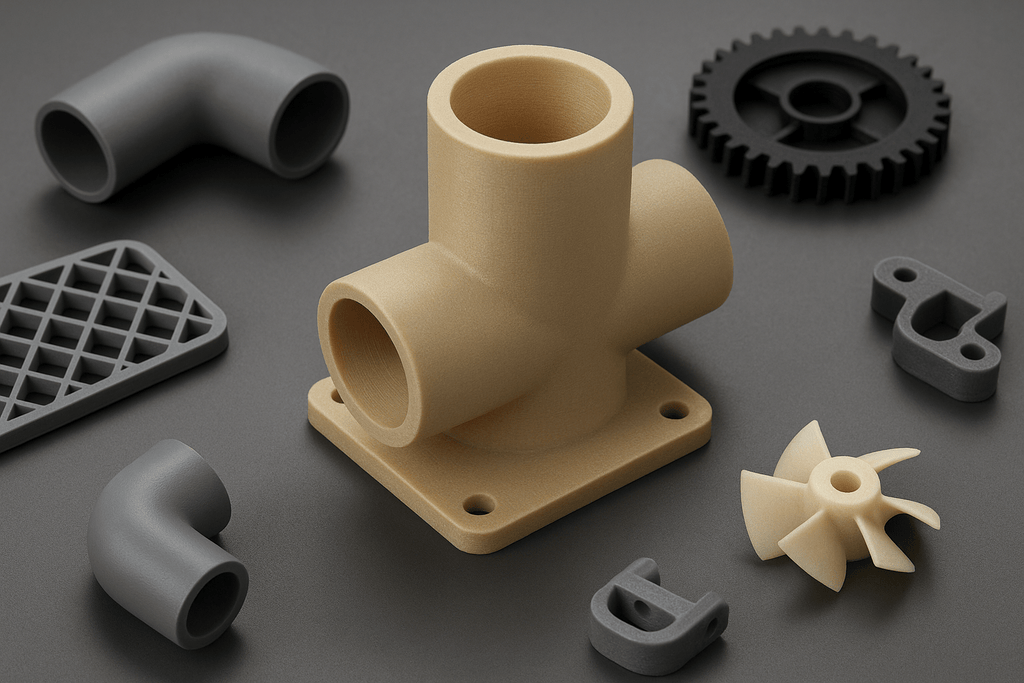
Why Custom 3D Printing Beats Standard Parts for Any Project
Beyond the Standard: Why Custom 3D Printing is a Game-Changer for Any Application
Introduction
In an increasingly tailored world, standard parts and one-size-fits-all solutions just don’t cut it anymore. Whether you're a product designer, hobbyist, contractor, or manufacturer, you've likely faced the frustration of trying to make a mass-produced part fit a unique project. Enter custom 3D printing—a revolutionary technology that bypasses traditional limitations and allows individuals and businesses alike to create exactly what they need, when they need it. With applications spanning from engineering to arts and crafts, custom 3D printing is no longer a luxury—it's a necessity for precision, efficiency, and innovation.
This article explores why standard solutions fall short, how custom 3D printing fills the gap, and what this means across several industries. We’ll break down real-world examples and data to show how this technology is not just complementary but transformational.
Section 1: The Limitations of Off-the-Shelf Solutions
Off-the-shelf parts are designed for the masses, not the specific. While convenient, they often come with serious compromises:
-
Poor Fitment: Whether it’s plumbing in an old building or assembling a DIY drone, components rarely match the required dimensions or specifications.
-
Wasted Resources: When parts don’t fit, time and money are wasted trying to adapt or modify them.
-
Design Constraints: Creativity is often stifled by what’s available on the shelf.
According to a report by Deloitte, 45% of manufacturers cite lack of customization as a significant barrier to optimal performance. (Source)
When the project demands precision, off-the-shelf simply won't cut it. That’s where custom 3D printing steps in.
Section 2: Custom 3D Printing Unlocks Tailored Solutions
Custom 3D printing enables the creation of parts that match exact requirements. This opens up opportunities for innovation and problem-solving:
-
Dimensional Accuracy: Print to exact measurements for perfect integration.
-
Material Selection: Choose from a range of materials (e.g., PLA, ABS, TPU, PETG) depending on strength, flexibility, or environmental resistance.
-
Rapid Prototyping: Iterate designs quickly and affordably.
-
Small-Batch Production: Economical even at low quantities, ideal for niche or limited-use cases.
A 2023 Statista report notes that the global 3D printing industry is projected to grow to over $50 billion by 2030, driven by demand for customized solutions. (Source)
Section 3: Industry Highlight - Plumbing & HVAC Applications
Let’s take plumbing as a concrete example. Contractors and homeowners alike face challenges when working with outdated or irregular piping systems. A standard elbow joint might not fit a retrofitted connection. Here’s how custom 3D printing solves it:
-
Retrofit Compatibility: Custom fittings can be printed to match older specifications.
-
Space Optimization: Design components that fit tight or awkward spaces.
-
Functional Prototypes: Test parts under real conditions before final installation.
Case Study: A contractor in Boston used custom-printed PVC couplings to retrofit plumbing in a 1920s apartment building, saving over $1,500 in labor and materials. (Plumbing & Mechanical Magazine)
This level of customization simply isn’t feasible with standard parts.
Section 4: Niche Hobbyists and the Power of Precision
For hobbyists in areas like RC cars, drones, cosplay, or model building, precision and personalization are everything.
-
Custom Mounts & Housings: Tailor parts to fit specific battery packs, motors, or camera gear.
-
Artistic Design: Bring imaginative designs to life without compromise.
-
Problem-Solving: Fix rare or obsolete components with custom replicas.
Data shows that over 68% of makers who own 3D printers use them primarily for hobby-related applications. (Make: Magazine)
In these circles, standard parts don’t just fall short—they halt progress. Custom 3D printing keeps the creative momentum going.
Section 5: Manufacturing Efficiency & On-Demand Production
In manufacturing, downtime is money. Custom 3D printing eliminates wait times and dependency on supply chains:
-
Replacement Parts: Print machine components on-site, reducing delays.
-
Jigs and Fixtures: Customize tools that enhance production workflows.
-
Cost Efficiency: Avoid the need for injection mold tooling for small runs.
According to McKinsey, additive manufacturing can reduce manufacturing lead time by up to 90%. (Source)
This is a massive leap forward for businesses aiming to stay agile and competitive.
Conclusion
Standard parts serve a purpose, but they weren’t made with your project in mind. Whether you're retrofitting an HVAC system, customizing a cosplay suit, or replacing a factory tool, custom 3D printing delivers precision, personalization, and performance that off-the-shelf parts can’t match.
Custom solutions reduce waste, save time, and elevate quality—all while giving creators and companies the freedom to innovate without compromise.
Call to Action:
Is your project hitting a wall with off-the-shelf parts? See how HydroFlo's custom 3D printing can open up new possibilities!

